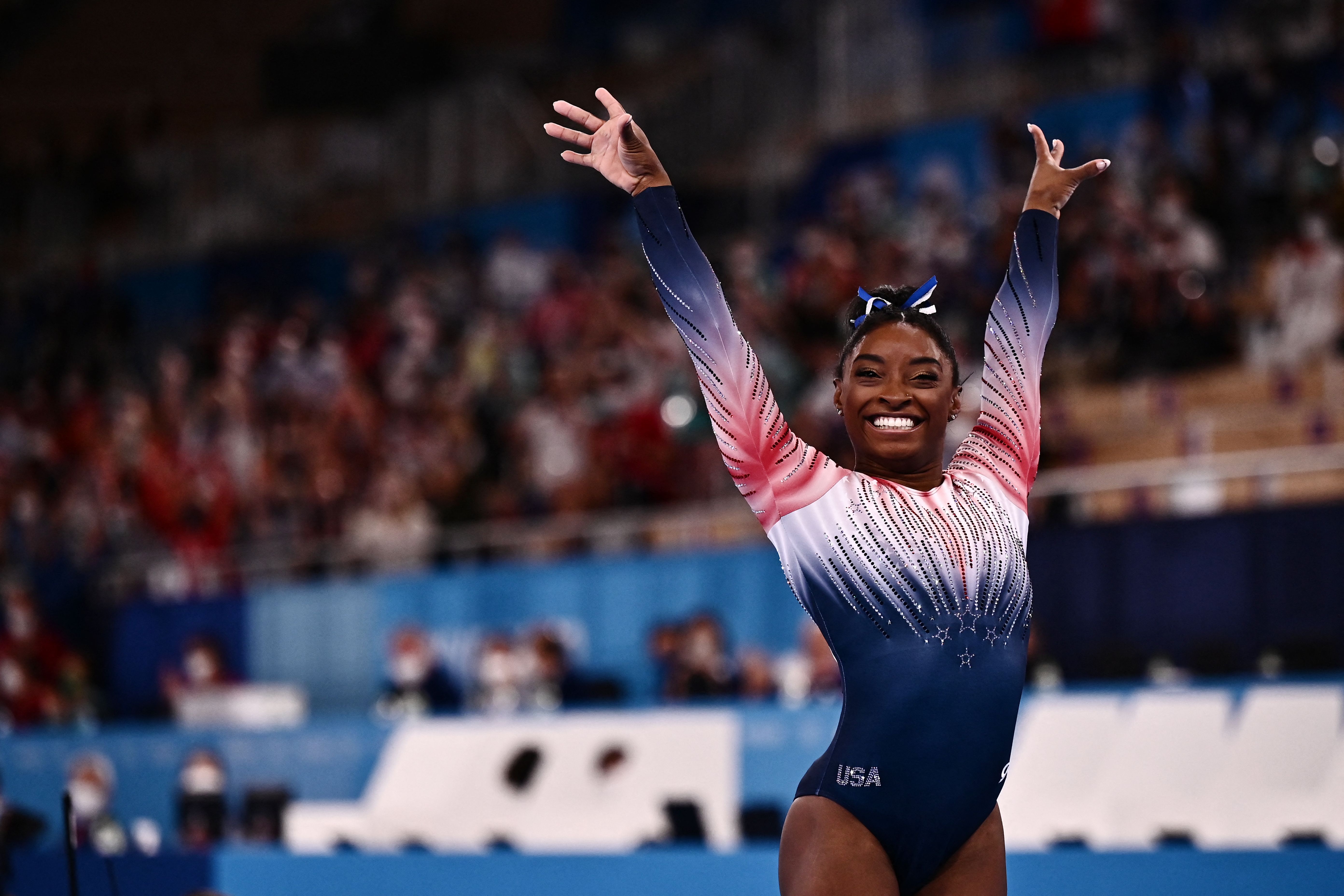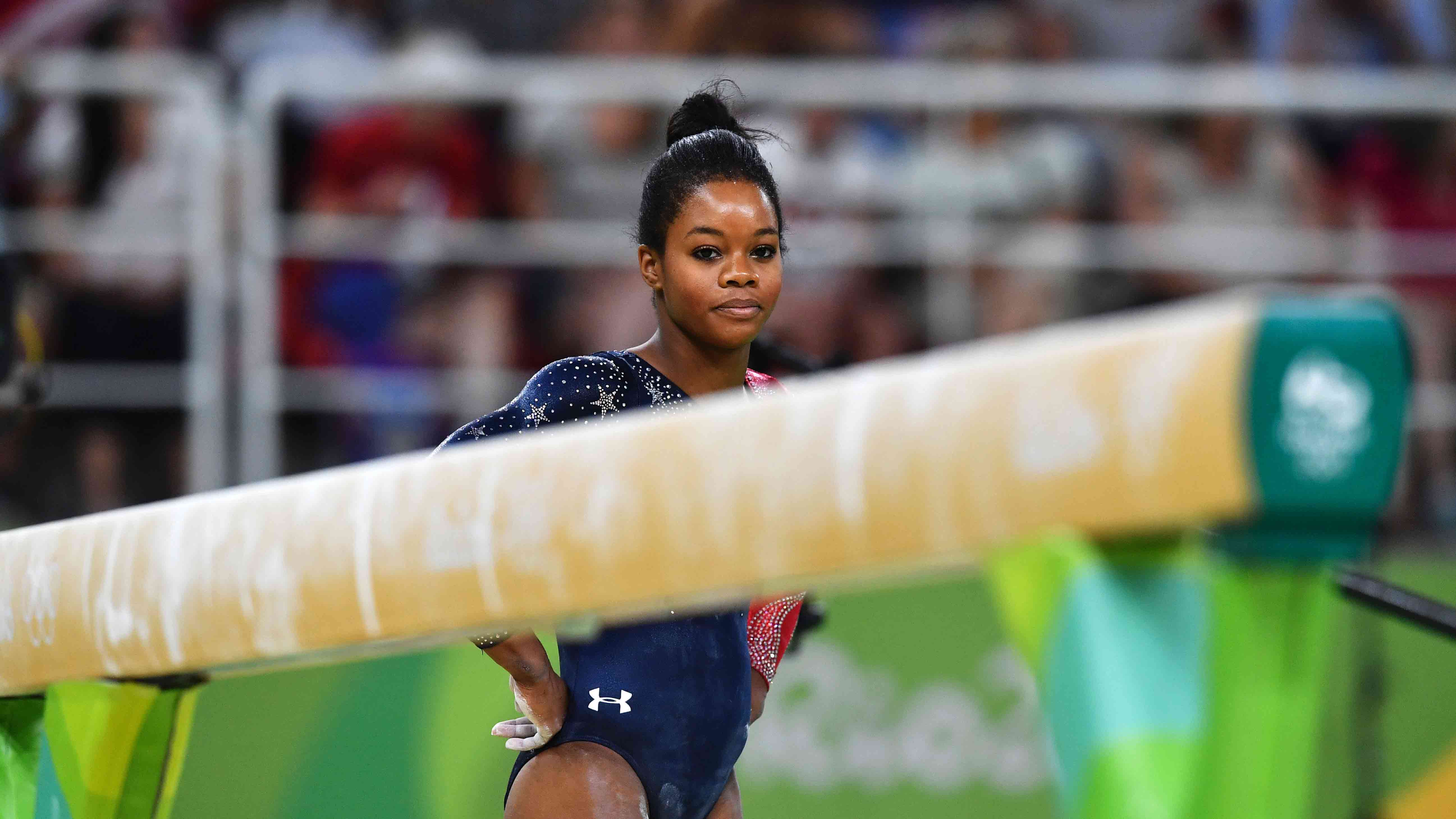For years in gymnastics, the phrase “the twisties” was usually uttered in hushed tones, as if saying the slang term for an athlete's sudden loss of air awareness during a routine would only deepen the problem.
“It’s almost like a mythical kind of thing,” longtime Oklahoma men's gymnastics coach Mark Williams said. “When someone says ‘the twisties,’ everyone shudders because it’s bad."
Then Simone Biles said it in front of the whole world two summers ago in Tokyo, after a sudden onset of the mental block early in the pandemic-delayed 2020 Olympics forced the sport's biggest star to pull out of several competitions — including the team and all-around finals — to protect herself.
Biles returned to win bronze on balance beam while doing a slightly altered routine that removed any twisting elements. It was her seventh Olympic medal, and she called the triumph sweet while also admitting the twisties hadn't really disappeared. She and coach Cecile Landi had just found a way to work around them.
Get Boston local news, weather forecasts, lifestyle and entertainment stories to your inbox. Sign up for NBC Boston’s newsletters.
That won't be an option on Saturday when Biles competes for the first time since Tokyo in the U.S. Classic in the Chicago suburbs. As of Thursday, the 26-year-old Biles is scheduled to do all four events, including uneven bars, which she acknowledged on her Instagram stories feed this week has been the most difficult discipline to return to "both mentally and physically" because the routines are essentially 45 seconds of uninterrupted flipping, floating and twisting from bar to bar.
Biles could decide at any time what she's comfortable doing and not doing at this point, though the most decorated female gymnast of all time added: “I'm fine. I'm twisting again. No worries. All is good.”
However this weekend or the next 12 months in the run-up to the Paris Olympics — if it gets that far — goes, simply making it back to this point is a victory in itself.
Not everyone does.
A month or so after Biles raised the conversation about “the twisties” and the mental health issues associated with them, Gage Dyer was training in Oklahoma and eyeing a spot at the 2021 world championships.
Solid performances at the 2021 Olympic trials — where he finished third on vault and fourth on floor exercise — had Dyer's confidence soaring. Still, he knew he needed to ramp up the difficulty of his routines if he wanted to make it to worlds.
More twisting. More flipping. Elements that had come easy to him since he became a gymnast at 13, a unusually advanced age for someone to take up the sport. Not that it stopped him. Within five years Dyer had worked his way into a spot at Oklahoma, one of the dominant men's programs in the country.
By 2018, he was competing regularly at national meets. By the spring of 2021, he was an NCAA champion in multiple events. Sure, he'd heard about “the twisties” but never experienced them. Everything came so easily for so long that he assumed he never would.
Then in the late summer or early fall of 2021, the basics he'd mastered so easily at a young age essentially vanished.
Williams noticed. Not that Dyer wanted to talk about it.
“He just didn’t tell me,” Williams said. “He just stopped doing some of the stuff he was doing. I would be like, ‘How come you’re not doing that?’ He’d say, ‘I just got lost, I’m not doing it today.’ Couple days later, ‘You figure that out?’ ‘No, not yet.’”
Maybe it was the stress of being 23 — a time when a male gymnast typically enters his prime — and feeling like he was “on the clock.” Maybe it was the fine line he was trying to walk between adding more difficulty in a hurry while refining his “old” skills. Maybe it was something else.
To this day, Dyer still isn't sure what happened. All he knows is that for years he could do a “full in” — a double backflip with a full twist mixed in — and then he couldn't.
The full-in had always been “super basic" right up until the moment it became borderline impossible.
“I'm like, ‘if I can’t do this, then I have a serious problem,'” Dyer said.
While there is no common cure for “the twisties," many gymnasts benefit from taking a step back mentally in hopes of hitting some sort of internal reset button. Dyer, trying to prove to the selection committee he was ready to compete on the world stage, didn't have that luxury.
An ankle injury suffered in training ultimately took him out of the mix. He hoped the small break the injury provided would help him figure it out. It didn't.
He'd find himself trying to throw the most routine skills — at least routine skills for someone with his resume — into a foam pit only for it to turn into “complete chaos.” He'd land on his back. He'd land on his side. Everywhere, it seemed, but his feet.
Dyer likened it to a dream — maybe nightmare is the better word — where you need to run in order to save your life, and you look down and your legs are moving and you're simply not going anywhere.
“I just got to a point where I knew if I continued to try and do this and push through, I’m going to land on my head and seriously hurt,” Dyer said.
While Dyer was able to maintain some of the tumbling elements that made him a floor exercise and vault specialist — things like triple-back pikes, skills that required only flipping, not twisting — by February 2022 he realized trying to make a run at the 2024 Olympic team was futile.
“The struggle of trying to compete and trying to maintain that top level of competitiveness while I was dealing with what I was dealing it, it wouldn't have been beneficial for me,” he said.
Dyer moved to Florida and currently works in the “Lion King” show at Walt Disney World, where part of his job requires him to work on a trampoline. Some of the things he thought were gone forever at the height of “the twisties” have returned. Just not enough for him to consider coming out of retirement.
“I’m kind of at peace with what I’ve done, but also, I’ll be watching gymnastics and really miss it and think to myself that I could come back if I wanted to,” Dyer said. “It’s been in my head a time or two. But I don’t see it. ... I really like the chapter of life I'm in.”
Dyer will be watching Saturday night when Biles steps back into the spotlight for the first time since those surreal two weeks in Japan, when the sports world stopped to focus on a singular athlete turn from heavy favorite to win a fistful of gold medals to essentially a cheerleader for her U.S. teammates while she and her coaches tried to figure out what went wrong.
He believes Biles' candidness about her battle with the various elements of “the twisties” has made it safer to talk about.
“She’s proving it right now that you can get back to a certain level and be able to compete,” he said. “That it’s not the end of everything. There is a way back.”



